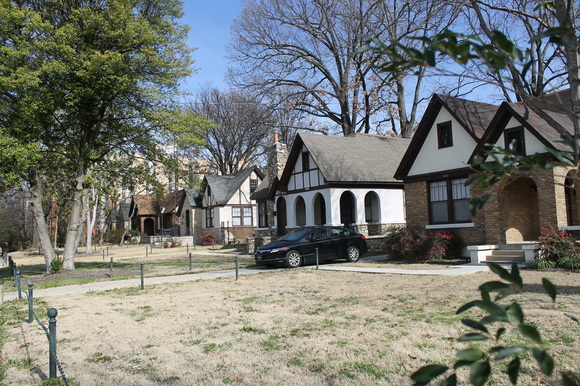
The three houses are rental properties owned by the U of M, and the university has gone to great lengths to ensure they are secure.
Buchanan says these homes are used as models of the Crime Prevention Through Environmental Design, or CPTED. Buchanan, U of M Police Services and the Memphis Police Department started the initiative. The goal is to improve the safety of the University District neighborhood.
Captain Kevin Langellier, special programs coordinator of police services, is in charge of the initiative.
The University has been involved since about 2000, he said. There are two additional officers who are certified through the completion of a 40-hour training course.
After securing a property and making sure all windows and doors are lockable, Buchanan says the University’s first priority is getting the property within the design standards.
The standards focus on securing the perimeter of a property through natural surveillance such as line of sight and mechanical surveillance such as security cameras and alarms.
Natural surveillance involves no extra personnel or expense, Langellier said.
“For homes,” he said, “you want to have a situation where the homeowner can see outside, and their neighbors can see and police can see – nothing is blocking the sight of the front door.”
When police services officials secure a home, they do an assessment of the property with a written survey and photographs to illustrate areas that need attention.
“The whole philosophy is bringing in people from different backgrounds to assess the properties,” Langellier said.
Employees with physical plant, criminal justice, landscaping, campus planning and police services assess different aspects of each property.
The group of various assessors makes a list of recommendations to give to the property owner. The recommendations are listed from most to least critical, Langellier said.
“They go down the list and do as many as feasible. They can prioritize their money and time. We suggest doing the easiest, least expensive first,” he said.
Buchanan touched on the safety measures implemented at the University-owned homes on South Highland Street. The changes included trimming the trees and brush, creating a clean line of sight from the windows to the sidewalk and installing a small chain fence to secure the perimeter of the yard to deter foot traffic.
“The most important way to secure your property is to lend the illusion that you’re home 24 hours a day,” Buchanan said.
She suggests leaving lights, TVs or radios on and periodically moving your vehicle.
One tip Langellier suggests and implements on all University rental property is ensuring the house number can be seen easily and is in a well-lit place.
“This helps with deliveries and police and ambulance response—there’s no guessing,” he said.
Langellier said police services has done presentations at the Normal Station, Redwood and East Buntyn neighborhood meetings, and is working toward doing more surveys and evaluations on individual homes.
Anytime U of M Police Services becomes involved in the community outside of its campus jurisdiction, Memphis Police Department must become involved.
“We’ve been actively partnering with MPD and doing surveys on local churches and public libraries that are around the university, but not university owned,” Langellier said.
Crime Prevention Through Environmental Design power point from Community Police Problem Solving Team
University Neighborhood Partnership CPTED Initiative website
 RSS Feed
RSS Feed